Originally published on inSided.com on October 27, 2020.
Who doesn’t love a game and a bit of a competition?
Especially if there are prizes to be won!
Using gamification to engage your users makes sense, right? But let’s be honest, gamification, and specifically community gamification, can mean a lot of things to different people. So let’s take a look at what exactly gamification is all about, how best to use it to engage your customers and offer up some examples of how we apply a gamification approach for inSided end users!
Quick refresh: What exactly is gamification?
In online communities, gamification is used to motivate and engage members by creating playful experiences. To put it as simply as possible: Gamification (in any context!) uses an understanding of human psychology to elicit emotions and positive experiences, providing people with an incentive to participate.
Think about how the software and apps you interact with daily are all constantly applying gamification to their non-game context to keep you engaged, motivated and excited. You’ll find it across health and fitness, like those Weekend Warrior step competitions you challenge your Fitbit friends to, or the way Peloton’s on-screen leaderboard keeps fitness fanatic spinners at-home glued to their bike and coming back for more (I don’t speak from experience, but reliable sources tell me it’s truly addictive. Now, where’s the cake?).
Your Headspace app keeps you meditating in order to keep up your run streak, Reddit keeps you hooked with upvotes and their awards and coins system—heck, there are productivity apps like Forest that encourage you to stay focused on the task at hand by keeping a little plant alive (don’t look at your phone, you’ll kill the plant!). The social media giants like LinkedIn are adding more and more gamification elements on a consistent basis—to what percentage is your LinkedIn profile complete?
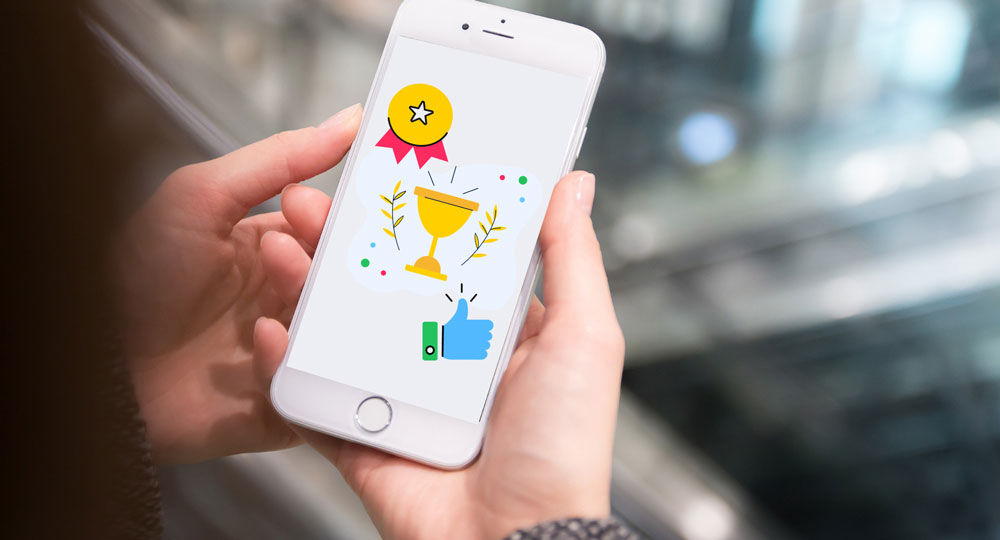
Gamification is everywhere.
But how can we apply it within our online communities to maximize user engagement and activity?
It’s a question of motivation
Motivation for community members is typically either intrinsic or extrinsic (and most commonly, a combination of the two). Intrinsic motivation is driven by somebody’s interest or enjoyment in a task itself, without any need for external pressure or reward. For example, a member that comes to the community with intrinsic motivation comes because he truly enjoys participating in a discussion—and oftentimes, providing help to others—about specific topics.
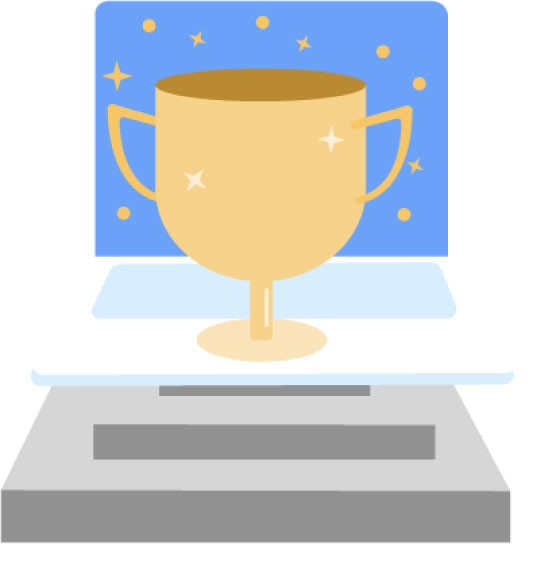
In contrast, extrinsic motivations are triggered by external factors, such as prizes, rewards or recognition from others. Community experiences trigger intrinsic motivations, which are then followed by extrinsic motivations, resulting in an increase in engagement from community members, as well as influencing their behaviors.
We see that when people participate in a community for both extrinsic and intrinsic motivational reasons, they are much more likely to display higher levels of engagement and participation.
Competitions, prizes and other gamification techniques are a great way to engage members that do not participate based solely on intrinsic motivations. They can essentially act as the “push” required to compel someone to act or display a behavior (in this case, participation) when before, their intrinsic motivation was not quite strong enough to incite the behavior on its own (turning ‘lurkers’ into participants). In other words, gamification enables members to participate not only because the task they are doing is interesting and fun, but also because they are rewarded for doing so, and it helps them to achieve a certain social status or level of recognition from others (and this can really be as simple as a “like” on their post).
Gamification in B2B? How does that work, then?
So gamification is a vital element of strong and dynamic customer communities, and nowhere more so than in the B2B SaaS space, where community topics can be dense with technical information. In order to create and maintain a thriving, interactive space, community managers must find ways to incite this user engagement.
While in B2B we do know that we are still talking essentially to people, and not to faceless entities, it is still typically less likely for users to arrive at a B2B community with as much intrinsic motivation as they might with a B2C community. This is simply because there is less likely to be quite as much true passion behind the relationship.
Of course, this is not always the case, and well-executed branding can go a long way to increasing the level of passion and true connection your customers feel for you and your products, but let’s be frank: Sarah is going to struggle to find the same level of intrinsic motivation to participate on a community she considers part of a ‘work’ task as she might on a community dedicated to her lifelong hobby, competitive dog grooming. Just as Mark has more intrinsic motivation to get chatty with his fellow wooden spoon whittlers than with other users of his accounting software.
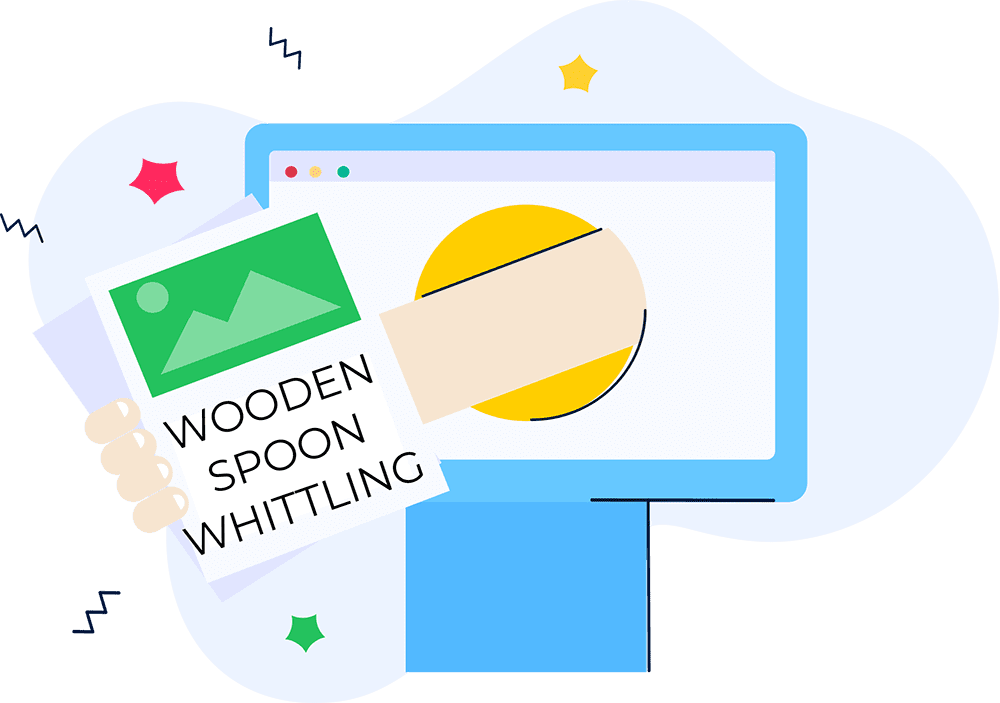
This is where gamification can quite substantially change (if you’ll excuse the pun) the game for B2B community engagement. Gamification triggers engagement behaviors by creating multiple moments of user gratification, which hook community members to keep coming back for more—the perfect blend of intrinsic and extrinsic motivation to keep people engaged when their fellow souvenir stamp collectors are incommunicado.
Applying gamification elements to your B2B community
So, are you using all the tools your community platform offers in order to create a super engaged user base and loyal members?
Here are just some of the gamification tools and tactics used, loved (and… played?!) by customers and end users of communities that run on inSided.
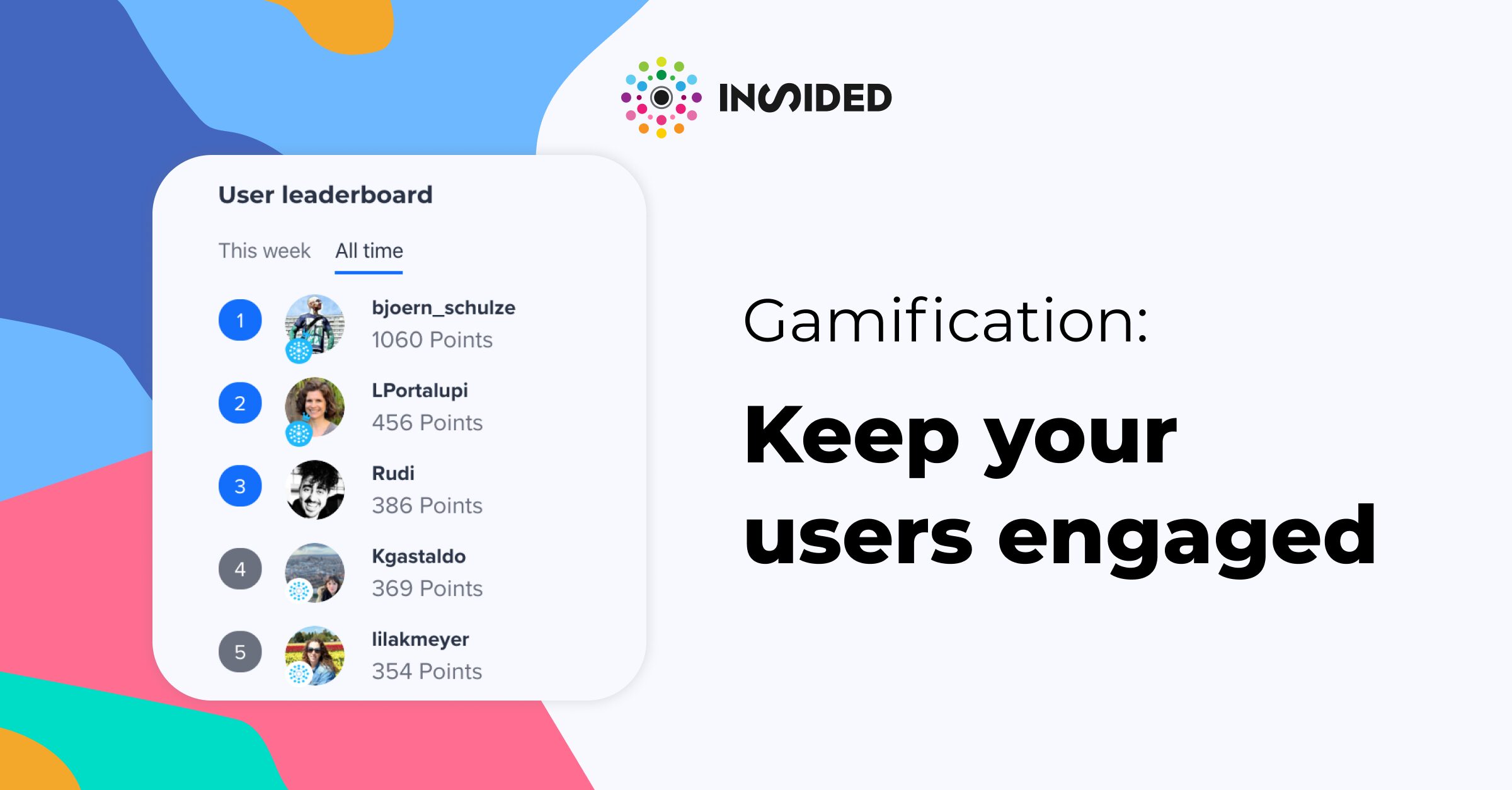
Likes
If you’re not familiar with “Likes”, you must have been living under a rock. Likes are one of the more social elements of a community and are a simple, great way for your members to show their appreciation for the contributions of others. Likes give users a feel good factor, especially when they are helping others or adding humor to a discussion.
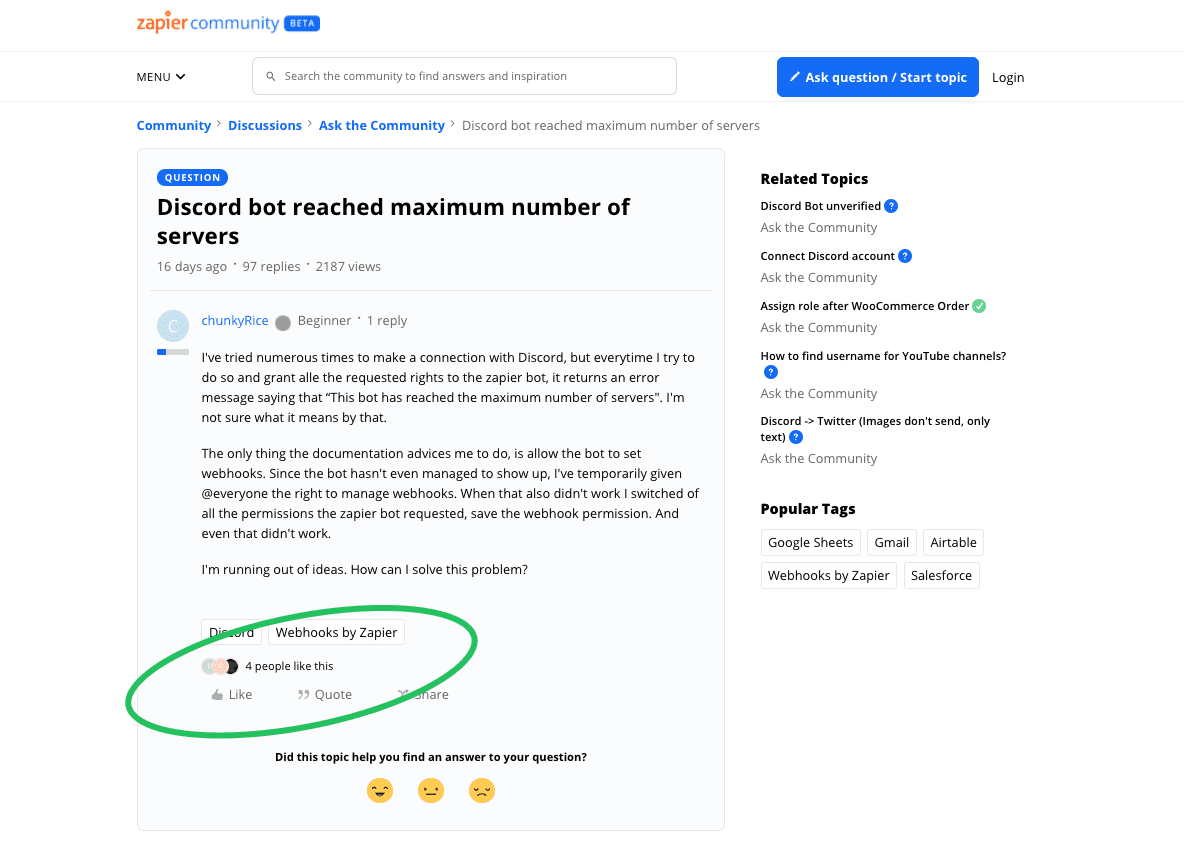
Zapier’s beta community encourages users to “like” or upvote other users’ questions and responses.
Badges
Badges are commonly found within online communities, and are generally used to highlight the expertise of users, but they can also be used to reward new users’ first activities in a fun and light-hearted way. Badges are a very visible element on user profiles and avatars and members love to receive new ones. Customize your badges so they follow your brand philosophy.
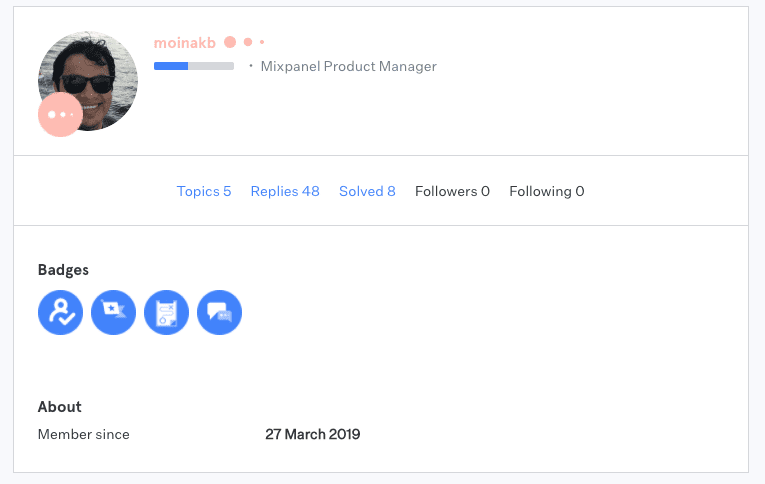
The QBQ Mixpanel community rewards users with badges so they can show off traits such as helpfulness, curiosity and knowledge.
Ranks and Leaderboards
Ranks are great in B2B contexts where subject matters can be more complex. They can be used for longer term purposes as they allow you to identify your biggest advocates—who are instrumental for a thriving community. We advise giving members a rank on their first, second and fifth login. When you do this, members are immediately aware of the rank system and can understand that it is based on their level of activity. The steps to climb up the ranks should then get bigger and bigger (and harder and harder!). For example, to get to one of the higher ranks a user should have answered a certain amount of questions. This way, the users with a higher rank have more intrinsic motivations to come back to the community, so more can be asked of them. User ranking is a key community activation tactic.

Gainsight’s Gamechanger community leaderboard.
Pro tip: Research (and our gamification expertise!) cautions us against telling members what the exact rules are, especially with user ranks. It is best for the users to be aware that there is a gamification system in place, and that the rewards are based on their level of activity—but not to tell them the exact actions they need to perform in order to earn a badge or increase in rank. Approaching gamification in this way increases your engagement anticipation and compels users to ‘come back for more’ on the community.
Creating badges that are directly related to your business goals, for instance, can inspire certain desirable customer behaviour. For example, a service community that wants to reduce the amount of calls for a specific product feature should create an expert badge for that specific feature. The badge will show which other members have expertise in this area, and this builds trust, as people have a higher tendency to trust other members that are using the same product features as them.
Using the rank system to identify users to invite into ideation or co-creation forums is another great way to use gamification to achieve your business goals, as are other community engagement initiatives such as beta testing groups and subject matter expert programs.
In a nutshell, stimulating members to become more active through gamification results in more content being created, more answers being provided, and your self-service ratios rocketing.
Learn More
Looking create a single destination for your customers to connect, share best practices, provide feedback, and build a stronger relationship with your product? Schedule a demo to learn more.
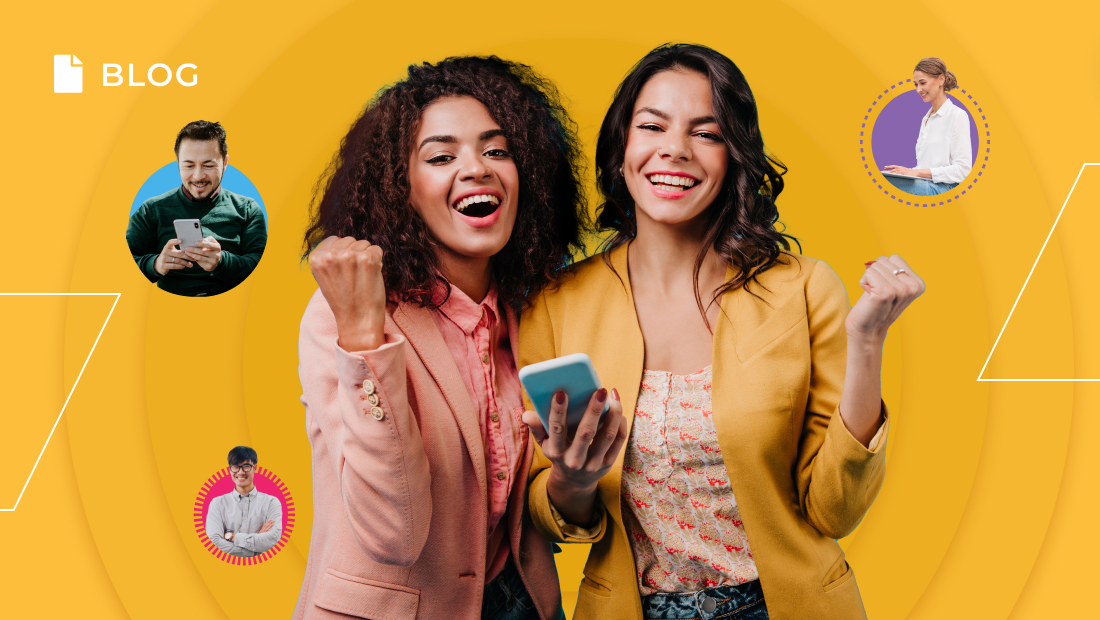

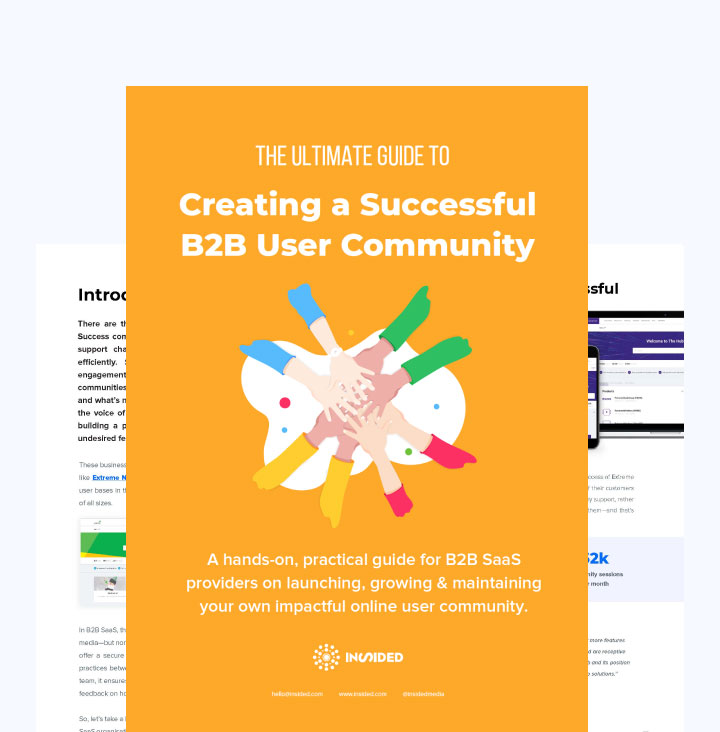 Want more? Get the full guide.
Want more? Get the full guide.